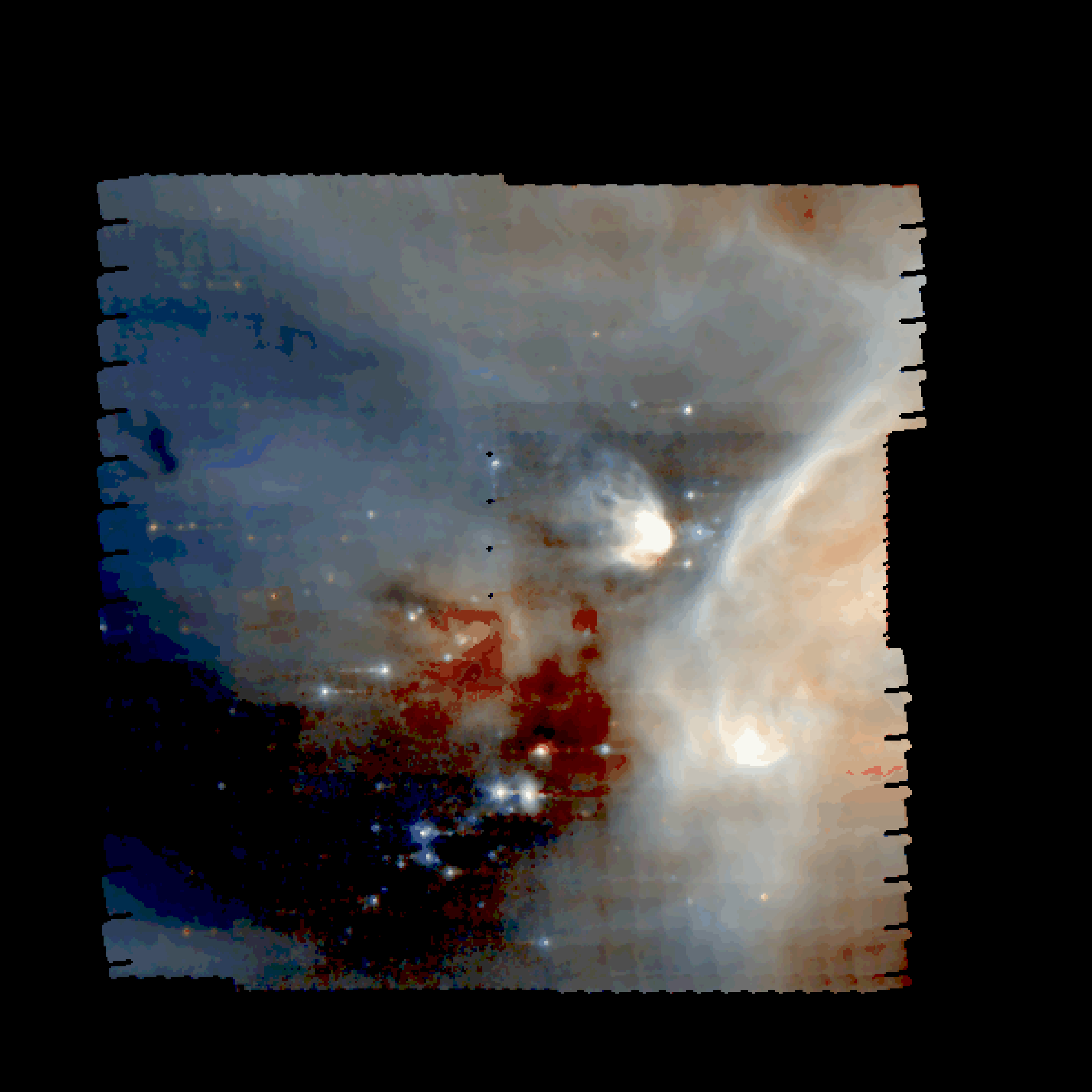Rho Ophiuchi

An image of the Rho Ophiuchi dark cloud taken with ISOCAM
The scattered bright dots are new stars of moderate size, comparable in mass to the Sun. The bright fuzzy object, upwards and slightly to the right of centre, is a new massive star, much heavier than the Sun, still wrapped in the placental cloud from which it formed. A similar object appears partly veiled towards the bottom right of the picture. The conspicuous wisp right of centre is the interface betweeen the dense cloud and the general interstallar medium. In a dark region near the centre of the picture the dust is so dense that even an infrared telescope can look no further into the murk. The image is a colour composite of data taken at wavelengths of 7 and 15 microns of an area of sky approximately 0.75 x 0.75 degrees.
 Return to the
Return to the